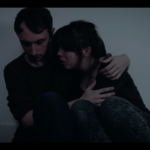The Hunger Games: Catching Fire (d. Francis Lawrence USA 2013)
The Hunger Games: Catching Fire (d. Francis Lawrence USA 2013)
Please read ‘On Reviews‘ for a guide to how I write film reviews. Any spoilers are appropriately marked and, though I personally prefer to know little about a film before seeing it, there is a synopsis at the bottom for any who wish to see one.
Battle Royal. Where everyone fights/competes, en masse till one is left standing. バトル ロワイアル (A. Koushun Takami Ohta Shuppan Japan 1999) tells of a class of students in a dystopian future, that are provided with weapons and forced to kill each other. It was adapted into a manga by Akita Shoten with art by Masayaki Taguchi. Both Manga and book are graphic but concern themselves with the human will to survive. This was then adapted into the film Battle Royale / Batoru Rowaiaru (d. Kinji Fukasaku Japan 2000). Kinji Fukasaku linkened the events in the book to his own experiences in the war as a 15 year old child with his own friends. Like many films before it, such as The Ring / Ringu (d. Hideo Nakata Japan 1998), One Missed Call / Chakushin Ari (d. Takashi Miike Japan 2003), Dark Water / Honogurai Mizu no Soko Kara (d. Hideo Nakata Japan 2002), Ju-On: The Grudge / Ju-on (d. Takashi Shimizu Japan 2002), and Pulse / Kairo (d. Kiyoshi Kurosawa Japan 2001), the USA were attempting to remake Battle Royale as their own film, using US Actors. This project never came to be, but The Hunger Games (d. Gary Ross USA 2012) did. This film was based on the novel The Hunger Games (A. Suzanne Collins Scholastic Press USA 2008). If one were to imagine what Battle Royale would have looked like as a USA film it may well have looked a lot like The Hunger Games. Slow, tense, character building before the action gets under way, ensuring that the killings are justified and that the individual is glamorised. This largely dispenses with the exploration of the psychology of survival, that was a large part of Battle Royale. However, The Hunger Games: Catching Fire is the sequel and if we leave behind any debates surrounding the concept and accept the aspects that have already been established by The Hunger Games we can take a look at the success of this film sequel.
This film, much like its predecessor, boasts an impressive supporting cast, whilst the nature of the piece also relies on new talent. Jennifer Lawrence as Katniss Everdeen, Josh Hutcherson as Peeta Mellark and Liam Hemsworth as Gale Hawthorne are amongst many of the newcomers showcased in this film. I will say the casting of both Jennifer Lawrence and Josh Hutcherson feels strange as both perform their roles in a way usually attributed to Keanu Reeves in ability – both barely going through the movements. The supporting cast on the other hand show their style and experience well and create interest where otherwise there would be none. SPOILER In a way the support the characters show to the central characters and their survival is exactly mirrored in the acting ability of the actors. It is unfortunate that such essential roles fall flat, especially considering the excellent performances of Donald Sutherland, Lenny Kravitz, Woody Harrelson, Jena Malone, Lynn Cohen, Sam Claflin, Liam Hemsworth and to some extent Elizabeth Banks.
Hunger Games: Catching Fire begins at a very bland pace. The film treats its beginning events as mere formalities. Yes, we know we have to get here, so I’ll go through the movements to get you there. There are only pockets of scenes that allow the characters (and actors) to showcase themselves. As more of the supporting cast are introduced this becomes less and less so. However, for an action film, that centres itself on such a violent concept, there is surprisingly few action scenes and far more drama. This drama isn’t really given the proper respect it deserves. It awkwardly sits between the two. However, Man Ray once said “The worst films I’ve ever seen, the ones that send me to sleep, contain ten or fifteen marvellous minutes. The best films I’ve ever seen only contain ten or fifteen valid ones.” 1 Both analogies work here. Some moments with the supporting cast, though aren’t necessary, are sublime. But only some moments in the film are at all necessary. Unfortunately the film is very predictable. Technically, however, the film attempts some original use of the camera and tries to do all it can to give beauty to the world and its characters. Though it relies too much on CGI and sometimes these original uses fall short of its intentions.
This film is a cash in of the apparent success of The Hunger Games. In many ways it fails. However, if we were to return to an earlier comparison: it’s better than Battle Royale II / Batoru Rowaiaru II: Chinkonka (d. Kenta Fukasaku, Kinji Fukasaku Japan 2003)… Look to the cameras and the supporting cast, the rest is useless and not in a good way. It’d be nice to see more work go into original concepts, too many sequels and adaptations. This film could be seen to be an expansion. The world and characters certainly add more to an existing world, but little to the principal cast. The Hunger Games: Catching Fire feels to create more interest in the subplots than the actual plot – watch it for them!
1 Ray, Man. ‘Cinemage’ in Hammond, Paul (Ed). The Shadow and it’s Shadow: Surrealist Writings on the Cinema. City Lights Publishers, 2001 (3rd Edition) Pg133
Further Reading
Interview with Jennifer Lawrence and Josh Hutcherson
Interview with Francis Lawrence
Collins, Suzanne. The Hunger Games (Trilogy in One). Scholastic Press, 2011.
Takami, Koushun. Battle Royale. Gollancsz, 2007.
Synopsis
After the events of The Hunger Games, tensions are high as a rebellion seems to be following the success of Katniss Everdeen in the last Hunger Games. With this in mind all the previous Hunger Games winners are used to form the next Hunger Games in an effort to resolve any issues of winners being beyond the game.








Leave a Reply